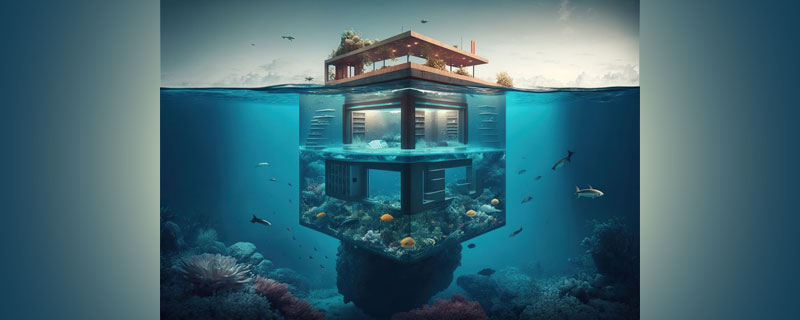Exploring the depths: The implications of humans living under the sea
The practicality and feasibility of humans living under the sea are still subjects of exploration and debate. The technical challenges, costs, and potential environmental impacts pose significant hurdles. However, considering the vastness and importance of the world’s oceans, underwater habitation holds the potential for exciting scientific discoveries, environmental conservation, and technological advancements that can benefit humanity both underwater and on land. Buildingspecifier.com Editor Joe Bradbury discusses:
Approximately 71% of the Earth’s surface is covered by oceans, making it the dominant feature on our planet. The oceans, which include the Atlantic, Pacific, Indian, Southern, and Arctic oceans, contain vast bodies of saltwater and play a vital role in regulating the Earth’s climate, supporting diverse marine ecosystems, and providing resources and livelihoods for human populations around the world. The remaining 29% of the Earth’s surface consists of continents, islands, and other land masses.
The concept of living under the sea has intrigued humanity for centuries, blending scientific curiosity, imaginative storytelling, and futuristic visions. Ancient civilizations had myths and stories that involved underwater realms and creatures. For example, in Greek mythology, there were tales of the god Poseidon and the city of Atlantis, which was said to have been submerged beneath the sea.
The idea of creating an enclosed space for humans to explore underwater began to take shape in the 16th and 17th centuries. Inventors such as Guglielmo de Lorena and Edmund Halley developed early versions of diving bells, allowing limited exploration and work beneath the water’s surface.
In the early 20th century, advancements in technology led to the development of submersibles like the bathysphere. In 1930, William Beebe and Otis Barton descended in a bathysphere to a depth of over 800 meters, opening up new possibilities for underwater exploration.
The 1960s saw the establishment of underwater habitats, which allowed scientists to live and conduct research underwater for extended periods. The Conshelf program, initiated by Jacques Cousteau, showcased the potential of living in underwater habitats and conducting scientific studies.
The United States Navy’s Sealab program, initiated in the 1960s, focused on developing undersea habitats for military and scientific purposes. The program facilitated extended stays and scientific experiments at depths of up to 183 meters.
Over the years, various underwater habitats and research stations have been established, including Aquarius Reef Base and NEEMO. These habitats serve as platforms for scientific research, training, and experimentation in underwater environments.
With advancements in technology, there is ongoing speculation about the potential for permanent human habitation under the sea. Concepts like seasteading, which involve the creation of floating or submerged communities, have gained attention as potential future living environments.
Throughout history, the concept of living under the sea has captured the imagination of people, blending scientific inquiry, exploration, and imaginative storytelling. While the idea of permanent underwater habitation remains challenging, ongoing research, technological advancements, and a growing understanding of marine ecosystems continue to expand our knowledge and possibilities for underwater exploration and living.
Here are some key points to consider:
Underwater habitats
Underwater habitats are designed structures that allow humans to live and work underwater for extended periods. These habitats can be located in shallow coastal waters or at greater depths, such as on the ocean floor or submerged in underwater caves.
Living underwater offers several potential advantages. The ocean provides a vast, largely unexplored environment rich in biodiversity, which presents opportunities for scientific research and discovery. Additionally, underwater habitats could potentially serve as off-grid, self-sustaining communities, utilizing renewable energy sources such as wave or tidal power.
Technical and environmental challenges
There are significant challenges associated with underwater habitation. The construction and maintenance of habitats capable of withstanding high water pressures, extreme temperatures, and corrosive saltwater environments present engineering obstacles. Life support systems, waste management, and ensuring a continuous supply of food and water are also complex considerations.
Research and exploration
Despite the challenges, underwater habitats have been utilized for scientific research and exploration. These missions allow scientists to study marine life, observe underwater ecosystems, and conduct experiments in controlled environments. Examples include the Aquarius Reef Base in Florida and the NEEMO (NASA Extreme Environment Mission Operations) project.
Current limitations
While underwater habitats have been used for research and short-term missions, long-term human habitation remains a distant possibility. The costs, logistical challenges, and technical requirements involved in creating self-sustaining, permanent underwater habitats are significant. The focus of current efforts primarily lies in research, exploration, and understanding the potential of underwater environments rather than establishing permanent human settlements.
In conclusion
While experimental underwater habitats exist and have contributed to scientific research, the challenges of constructing and maintaining permanent subaquatic communities are substantial. However, ongoing research and technological advancements may provide valuable insights and open up possibilities for future exploration and utilization of underwater environments.
The result of humans living under the sea could have several implications and outcomes. Living under the sea could offer unique opportunities for scientific exploration and discovery. It would allow for in-depth research on marine life, ecosystems, and the impact of human activities on the underwater environment. This could lead to a better understanding of the ocean’s biodiversity, ecology, and the potential for new pharmaceutical and biotechnological advancements.
Establishing underwater habitats could foster a greater sense of responsibility and stewardship for the marine environment. Living in close proximity to marine ecosystems may increase awareness of the importance of conservation and drive efforts to protect and preserve the oceans from pollution, overfishing, and other environmental threats.
Living under the sea would require humans to adapt to the underwater environment. This could result in physiological changes, such as the evolution of specialized traits for underwater survival. Additionally, the development of underwater communities could foster unique social structures, lifestyles, and cultural practices specific to this environment.









Leave a Reply
Want to join the discussion?Feel free to contribute!